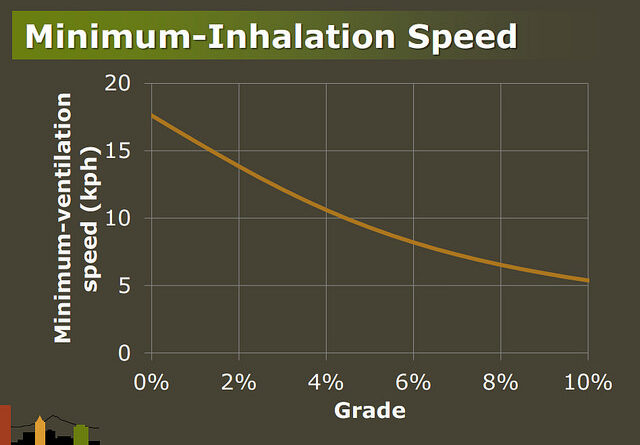Slow Down To Protect Your Lungs (Breath Cleaner Air) While Biking

Now this is something, as a bicyclist, I always wonder about — while we are cycling around town, inhaling deeply as we exercise, what is the quality of the air we are breathing? Well, Portland State University Ph.D candidate Alex Bigazzi resolved to find out, at least for the city of Portland. Bigazzi, with his $300 home-built air quality monitor, has biked around Portland measuring air quality. Bigazzi’s aim was to find out how much pollution he was breathing. Moreover, he wanted to determine a way to reduce his exposure as a cyclist to these fumes.
Bike Slowly
Bigazzi has recently been sharing his conclusions around Portland. His first tip is to slow down — slower speed decreases the toxic load.
“The biggest contributor to pollution intake, Bigazzi found, isn’t how dirty the air around you is. It’s how much of it you breathe,” michael Andersen of Bike Portland writes. Well, again, it seems likely that breathing harder and deeper is going to pull in more pollutants. We are all aware of this. One might also wear a mask in certain dirty sections of the roadway, but many people may not be interested in that style.
“Ventilation completely dominates the exposure differences,” Bigazzi said. “The exposure differences are not that big.”
Andersen goes on: “That creates an interesting mathematical puzzle: the harder your body works, the more pollution you breathe in. But the faster you move, the less time you’ll spend in the dirty air.” (Furthermore, rigorous exercise is good for you health.)
So assuming you’re headed to a place where the air is cleaner than it is along the roadway (Precision Castparts commuters, take note), here’s a curve Bigazzi constructed that shows the optimum speed to ride for various bikeway slopes. It’s expressed in kilometers per hour; the 17.5 kph “minimum ventilation speed” for a flat 0 percent grade is 11 mph.

Based on these calculations and Bigazzi’s hard data, he found that biking along a major arterial like Powell Boulevard means ingesting three to five times more traffic-related pollutants than biking on a local street.
There’s been some study of pollution levels in protected bike lanes, Bigazzi said, and pollution exposure there seems to be “measurably lower than where a bike lane would be on the same facilities for traffic-related air pollution.”
Exercise Is Still Better Than Driving
Streetsblog points the core issue that exercise is still one key to well-being. But CleanTechnica has published several articles on the adversity and carcinogenic quality of diesel fumes. So, do look for those slower, safer neighborhoods and protected bike paths in order to avoid as much of these harmful fumes as possible.
Just don’t avoid bicycling for health reasons. That would be illogical.
Related Stories:
SO2 & NOx — #2 & 3 In “Top 10 Toxic Ingredients Used By The Fossil Fuel Industries” Series
Take An Apple & A Bike-Share A Day; Boston Doctors Prescribing Bicycling
Bicyclists Have The Best Moods, Research Finds

Sign up for CleanTechnica's Weekly Substack for Zach and Scott's in-depth analyses and high level summaries, sign up for our daily newsletter, and follow us on Google News!
Whether you have solar power or not, please complete our latest solar power survey.
Have a tip for CleanTechnica? Want to advertise? Want to suggest a guest for our CleanTech Talk podcast? Contact us here.
Sign up for our daily newsletter for 15 new cleantech stories a day. Or sign up for our weekly one on top stories of the week if daily is too frequent.
CleanTechnica uses affiliate links. See our policy here.
CleanTechnica's Comment Policy

